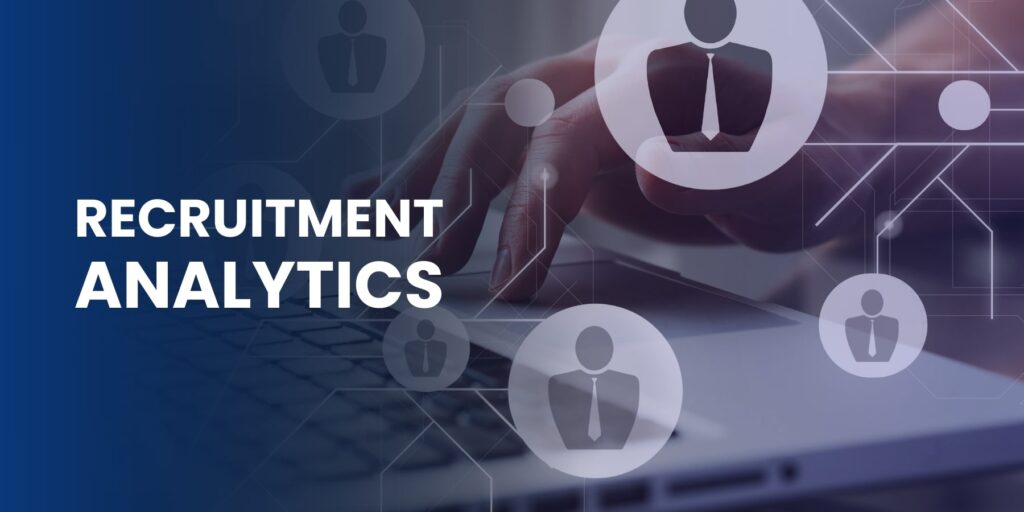
In the ever-evolving world of talent acquisition, predictive analytics has ushered in a new era, fundamentally altering the recruitment landscape. As an author deeply immersed in the trends shaping the future of work, I’ve observed firsthand the transformative power of data analytics in recruitment.
This exploration into predictive analytics reveals its potential as a tool for innovation and a pivotal force in redefining how organizations attract, select, and retain talent.
Table of Contents
The Dawn of Predictive Analytics in Recruitment
Transforming Talent Acquisition with Predictive Candidate Insights
The Predictive Index: A Tool for Understanding
Predictive Analytics and Business Strategy
Data Analytics: The Backbone of Modern Recruitment
The Future of Recruitment: Predictive, Personalized, and Powerful
The Dawn of Predictive Analytics in Recruitment
Predictive analytics in recruitment, at its core, involves using data, statistical algorithms, and machine learning techniques to identify the likelihood of future outcomes based on historical data. It’s a practice that has moved from a futuristic concept to a vital component in the recruitment toolkit.Why Predictive Analytics?
- Streamlines the recruitment process.
- Enhances the quality of hires.
- Predict candidate success and tenure within an organization.
How Does It Work?
Predictive analytics provides insights into candidate success by analyzing patterns and trends from past recruitment cycles. As well as employee performance data, enabling better-informed hiring decisions.
Transforming Talent Acquisition with Predictive Candidate Insights
The application of predictive analytics in talent acquisition is about more than improving operational efficiency; it’s about revolutionizing the way organizations understand and engage with potential candidates.- Identifying High-Potential Candidates: Predictive models can assess candidates’ resumes, application materials, and social media activity to predict job performance and cultural fit.
- Enhancing Candidate Experience: By predicting the roles candidates will likely succeed in, recruiters can provide more personalized job recommendations, improving the candidate’s journey.
Real-World Applications:
- A tech startup uses predictive analytics to identify skilled software engineers who are likely to thrive in a fast-paced, innovative environment.
- Based on historical performance data and personality assessments, a healthcare provider predicts which nurses will excel in high-pressure roles.

The Predictive Index: A Tool for Understanding
At the heart of predictive analytics in recruitment is the predictive index (PI), a tool that offers profound insights into individual behaviors and drives, enabling organizations to predict workplace performance.How Predictive Index Works:
- Through a series of assessments, PI measures individuals’ behavioral drives. Also, cognitive abilities, offering a data-driven framework to predict job performance.
Why Use Predictive Index?
- It provides a scientific basis for understanding candidate potential beyond what resumes and interviews can reveal.
Predictive Analytics and Business Strategy
The implications of predictive analytics extend beyond the recruitment process, influencing broader business strategy and organizational success.- Workforce Planning: Predictive analytics can forecast future talent needs, helping organizations to develop their workforce strategy proactively.
- Reducing Turnover: Predictive analytics enables targeted interventions to retain top talent by identifying factors that contribute to employee turnover.
Key Insights:
- Companies that integrate predictive analytics into their talent strategy improve their hiring success rates. Thereby achieving greater alignment between talent acquisition and business objectives.

Data Analytics: The Backbone of Modern Recruitment
Data analytics in recruitment go beyond predicting outcomes. It’s about building a comprehensive understanding of the recruitment ecosystem and enhancing decision-making at every stage of the talent acquisition.- Streamlining Recruitment Processes: Analyzing recruitment data can reveal inefficiencies and bottlenecks, guiding process improvements.
- Market Insights: Recruitment data analysis can provide valuable insights into market trends, helping organizations adapt their talent strategies to changing conditions.
Examples of Impact:
- An organization identifying the most effective recruitment channels for different types of roles, optimizing their recruitment marketing spend.
- A company using data analytics to understand the diversity of their applicant pool, informing targeted diversity and inclusion initiatives.
The Future of Recruitment: Predictive, Personalized, and Powerful
As we look to the future, the role of predictive analytics in recruitment is set to become even more significant, driving towards a more predictive, personalized, and powerful approach to talent acquisition.- Predictive: Advanced analytics will enable even more accurate predictions of candidate success and organizational fit.
- Personalized: Recruitment processes will become increasingly candidate-centric, with personalized job recommendations and engagement strategies.
- Powerful: The insights gained from predictive analytics will empower recruiters and hiring managers to make more informed, strategic decisions.
Future Trends:
- The integration of AI and machine learning with predictive analytics for even deeper insights.
- Predictive analytics are used to develop internal mobility strategies, helping employees find new opportunities within the organization that match their skills and aspirations.

Navigating the Future with Predictive Analytics
The journey into the future of talent through the lens of predictive analytics is not without challenges. Concerns around data privacy, the ethical use of predictive tools, and the need for transparency in decision-making processes are critical considerations. However, organizations can unlock their full potential by embracing these technologies with a thoughtful and ethical approach. Hence, to attract, engage, and retain the talent that will drive their future success.Key Takeaways
As we conclude our exploration into how analytics is revolutionizing recruitment, it’s clear that predictive analytics brings a new dimension to talent acquisition, enhancing both the efficiency of hiring processes and the quality of hires. Here are three main takeaways:- Leverage Predictive Analytics for Smarter Hiring: Use data-driven insights to inform your recruitment strategy, ensuring you’re attracting and retaining the right talent.
- Enhance Candidate Experience: By applying predictive analytics, tailor the recruitment process to meet the expectations of modern candidates, offering them roles in which they’re most likely to succeed and flourish.
- Gain a Competitive Advantage: Adopt predictive analytics to stay ahead in recruitment. This will ensure your organization remains agile, strategic, and competitive in the talent market.
David Bodiford
David Bodiford has been the Chief Strategy Officer at Vserve Ecommerce. Specializing in business development and strategic planning, David leads initiatives to expand Vserve Ecommerce's market reach, focusing mainly on the B2B sector. His expertise in digital marketing and strategic partnerships is integral to enhancing the agency's ecommerce solutions.


 Why Now Is the Perfect Time to Hire Remote Designers for Your Business
Why Now Is the Perfect Time to Hire Remote Designers for Your Business The Benefits of Adding an Offshore Graphic Designer to Your Creative Arsenal
The Benefits of Adding an Offshore Graphic Designer to Your Creative Arsenal